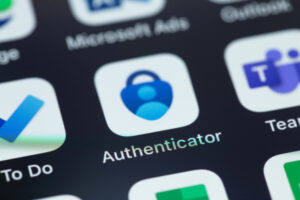Working with IT professionals isn’t exactly like your average office environment. Each IT employee is a skilled expert who does a lot of hard thinking throughout each shift. While IT work would be best done in separate, quiet offices where each IT professional could define their work environment for optimal focus and productivity, most IT workplaces have open floor plans or shared offices.
Managing a room full of IT professionals is like herding cats in hoodies. No matter how much you all agree on workplace policies, technicians are more individualistic than your average data-entry clerk.
1) Build a Shared Team Calendar
Nothing helps keep technicians on the same page like a shared calendar. The key here is to give everyone the ability to add notes to the schedule and to share details of their own schedule with the team. The shared calendar can make future meetings or project deadlines highly visible, but technicians’ personal details can be surprisingly useful for preventing confusion and hurt feelings.
One of the most useful applications of the team calendar is establishing coworker availability. Vacation time, business trips, or time sent to help another department can be shared on the calendar so that no one expects the support of a coworker who will be out of the office.
2) Record Highlights of Impromptu Meetings
Another interesting new challenge of many IT teams is working with remote team members. A great deal of IT work can be done remotely these days, either through remote access to a local computer through to collaborative software platforms used both in and out of the office. However, while the work might be interchangeable for remote and office employees, actual collaborative logistics can vary wildly.
Among the problems with a mixed remote-office team is impromptu meetings. Scheduled meetings can happen online where everyone is involved, and messages are recorded for posterity. However, a meeting that happens at the team leader’s desk just after lunch is not something remote team members can be a part of. While it’s best to try and avoid desk-side meetings for a mixed team, meetings that do occur should have the highlights recorded and shared with everyone for good measure.
3) Scheduled Contact with Remote Team Members
Many offices have been integrating employee communication software, including chat programs. It’s great if your teams want to touch base regularly to keep their efforts coordinated. It’s an entirely different thing if they are constantly chatting with each other and remote teammates under the guise of collaboration. On the flip-side, other teams have trouble maintaining open communication with remote teams, leaving them out of the loop when decisions are made or when efforts are put together into a final project.
The best way to counteract constant chatting and office exclusion of remote workers is to schedule regular hook-ups. If shift times overlap, as they most often do, consider a meeting once a day or a few times a week where everyone logs on and discusses any shared projects or tasks with office and remote employees. This will keep everyone on the same page and give you a good reason to limit frivolous online chat when it isn’t conducive to work.
4) Encourage Macroing and Keyboard Shortcuts
In the tech world, there are two kinds of dedicated IT professionals: Those who create shortcuts for themselves and those who pride themselves in doing everything the long way. Doing things the long and ‘proper’ way is great for security and auditing purposes, but for everything else shortcuts tend to be more productive.
No matter how many of each technician type you have in the office, encourage everyone to automate and create keyboard shortcuts whenever possible. Macros and scripts can simplify complex task lists that are done the same way each time while keyboard shortcuts make it easier to quickly perform a technical task with the fewest possible keystrokes from start to finish.
5) Minimize Desk-to-Desk Noise
Technicians are particular about workplace noise. Some people prefer to work in complete silence; some want music, some perform best with music playing through headphones. Unfortunately, giving each employee their ideal soundscape is nearly impossible with shared offices or an open floor plan. Phone calls are a particularly touchy subject because they must be made for work purposes and are inherently disruptive to everyone else.
However, you can take a few measures to reduce the transmission of noises from one desk to another. Sound absorbing materials and white noise generation can reduce the distance sound travels and serve to absorb little sounds that can cause coworkers to become irritated. Look into sound-absorbing desk dividers and office decor to give each technician a little more audio privacy.
6) Consider a ‘Dark Side’ of the Office
Many technicians are ‘night people’. Some of your people will prefer to work in a darkened office illuminated only by the glow of their screens rather than the typical bright office environment. In fact, the percentage might be high enough that turning out the lights in your office could offer a significant boost to individual productivity.
If you have a large open-plan floor, consider darkening just one half of the office and allowing your technicians to choose their seats based on the environment they want to work in. Those who prefer the cave-like environment of darkened cubicles will be very happy to have a more welcoming place to work and those who like the bright lights can keep on as they always have.
7) Break Room Accessibility
Calories, caffeine, hydration, and an opportunity to walk around are all important for complex work. This means that access to a break room can be critical to your IT team. Break room accessibility is part layout and part policy. It needs to be a quick and easy walk to from every desk so that cups of coffee, water, and snacks are easy to grab and get back to work.
Your policies also need to make it acceptable for technicians to access the break room when they need a drink or a wake-up snack. Far too many workplaces come with strange rules, expectations, and sometimes even shaming associated with unscheduled trips to the office kitchen. Intense intellection work requires water and snacks.
Remember that your in-house talent might not conform to the norms set out by company policies. Give them sufficient latitude to be their best no matter how that manifests, and you’ll have an engaged and loyal team of propeller-heads.





